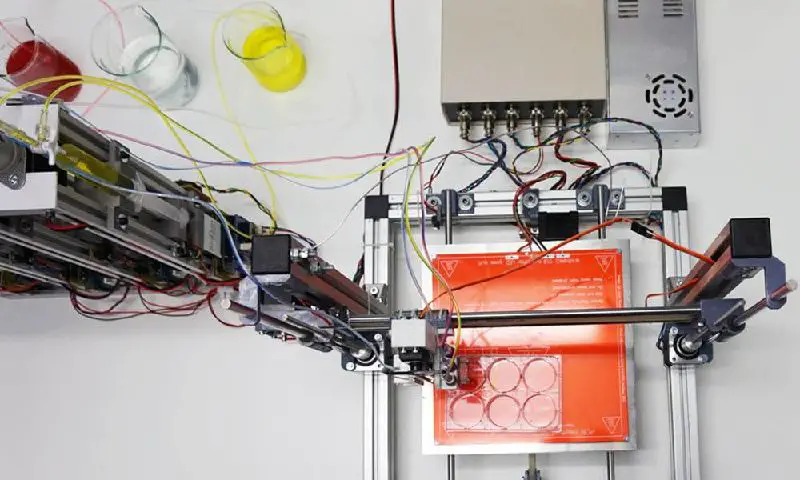
30th January 2017 3-D printer can make human skin Researchers in Madrid have demonstrated a prototype 3-D printer that can print fully functional human skin.
Scientists from the Universidad Carlos III de Madrid (UC3M), Centre for Energy, Environmental and Technological Research (CIEMAT), Hospital General Universitario Gregorio Marañón, in collaboration with BioDan Group, have announced a prototype 3-D bioprinter that creates fully functional human skin. The skin is adequate for transplanting to patients, or for use in research or the testing of cosmetic, chemical, and pharmaceutical products. This breakthrough is described in the scientific journal Biofabrication. It replicates the natural structure of the skin, with an external layer, the epidermis with its stratum corneum, which acts as protection against the external environment, together with a thicker, deeper layer, the dermis. This last layer consists of fibroblasts that produce collagen, the protein that gives elasticity and mechanical strength to the skin. Bioinks are key to 3-D bioprinting, according to the experts. When creating skin, instead of cartridges and coloured inks, injectors with biological components are used. In the words of Juan Francisco del Cañizo, of the Hospital General Universitario: “Knowing how to mix the biological components, in what conditions to work with them so that the cells don’t deteriorate, and how to correctly deposit the product is critical to the system.” The act of depositing these bioinks, which are patented by CIEMAT and licensed by the BioDan Group, is controlled by a computer, which deposits them on a print bed in a precise and orderly manner. The process for making these tissues can be carried out in two ways: to produce allogeneic skin, from a stock of cells, done on a large scale, for industrial processes; and to create autologous skin, which is made case by case from the patient’s own cells, for therapeutic use, such as in the treatment of severe burns. “We use only human cells and components to produce skin that is bioactive and can generate its own human collagen, thereby avoiding the use of the animal collagen that is found in other methods,” they note. There are several advantages to this new technology: “This method of bioprinting allows skin to be generated in a standardised, automated way, and the process is less expensive than manual production,” points out Alfredo Brisac, CEO of BioDan Group, the Spanish bioengineering firm specialising in regenerative medicine that is collaborating on this research and commercialising the printer. Currently, this development is in the phase of being approved by different European regulatory agencies to guarantee that the skin being produced is adequate for use in transplants on burn patients and those with other skin problems. In addition, these tissues can be used to test pharmaceutical products, as well as cosmetics and consumer chemical products where current regulations require testing that does not use animals.
---
Comments »
|







